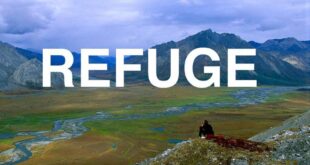SANTA FE, NM – Oct. 27, 2022 – The Santa Fe National Forest (SFNF) will begin implementation of a project to improve stream stability and aquatic habitat along approximately 1,000 feet of the Pecos River near Cowles on the Pecos/Las Vegas Ranger District as early as Nov. 1. The Pecos River at Cowles project is one of several riparian restoration projects approved under the 2021 decision signed by the Santa Fe, Carson and Cibola National Forests to improve watershed health, water quality and riparian habitat in Northern New Mexico.
The Pecos River at Cowles restoration project will install various structures to reduce streambank erosion, enhance fish habitat, facilitate sediment transport and improve the river’s ability to withstand flooding. Old log structures will be replaced with more permanent rock structures that will create pocket habitat for fish, stabilize the stream channel and minimize riverbank erosion. Other work will address habitat in a side channel and nearby wetlands.
Although the project area is downstream of the Hermits Peak-Calf Canyon burned area, it has seen minimal increases in post-fire flows during the monsoon season. To facilitate the work, the SFNF suggests that forest visitors avoid the area while crews are implementing the Cowles project.
Earlier this summer, restoration work began on the Rito Peñas Negras project near Deer Lake and Polvadera Creek project near Cañones. These projects are also part of the Northern New Mexico Riparian, Aquatic and Wetland Restoration Project approved in 2021. Riparian areas or wetlands provide essential ecological functions for plants and animals in an otherwise arid landscape. Although only 2% of the 4.7 million acres of National Forest System (NFS) lands in Northern New Mexico are riparian areas, they represent the highest plant, bird, insect, reptile-amphibian, and mammal biodiversity on the forests. At the same time, they have been impacted by significant stressors, including climate change, wildfire, agriculture and grazing, urbanization, recreational use and invasive species.
The three forests worked together to increase the pace and scale of riparian ecosystem restoration by identifying a broad range of projects to promote watershed health, species recovery and sustainable human uses, including hunting and fishing.
Additional information on the Northern New Mexico riparian, aquatic, and wetland restoration project is posted on the project webpage. Stay up to date on SFNF news by checking the SFNF website and following us on Facebook and Twitter.
 SantaFeToday.com Santa Fe’s Hometown News
SantaFeToday.com Santa Fe’s Hometown News

